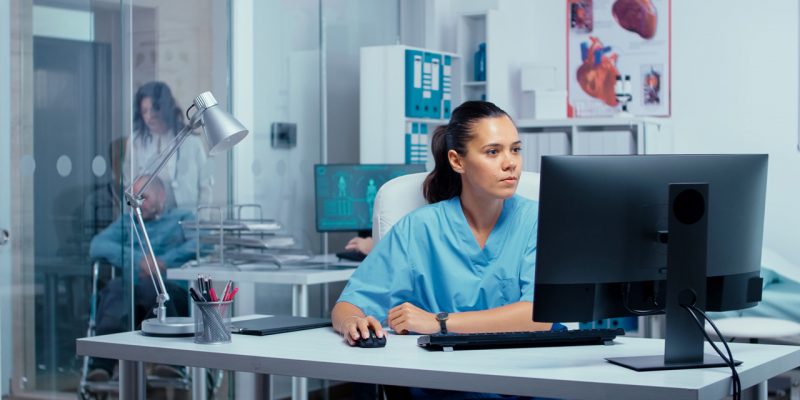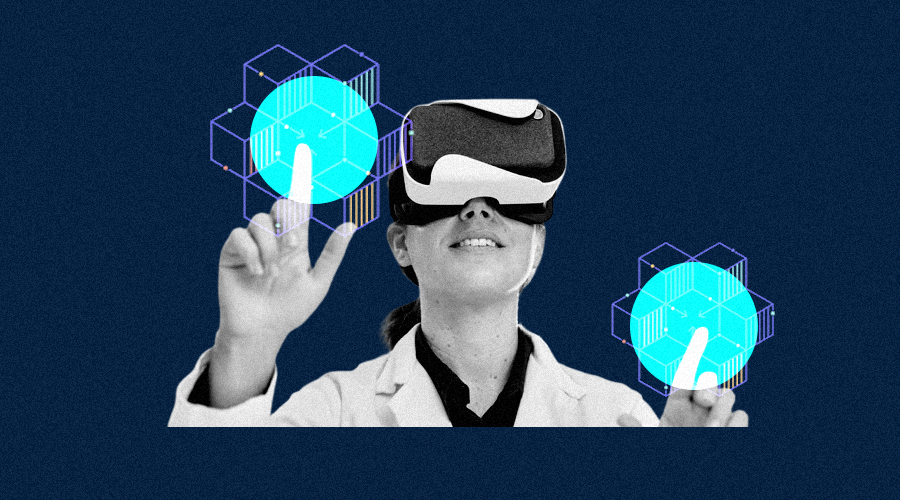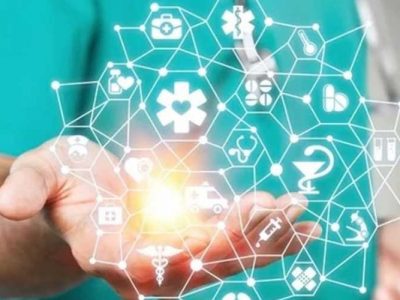
Data skills are being swiftly adopted by medical professionals and the general public in healthcare, resulting in enhanced efficiency.
The healthcare business is expanding at a breakneck pace, thanks to continual breakthroughs in information technology. Customization has opened up new avenues for potential and growth in the healthcare business. Artificial intelligence (AI) and data analytics are revolutionizing the healthcare industry by making cutting-edge technology a reality. In healthcare companies, the role of the healthcare software developer has grown increasingly important for end-to-end implementation. Developers should be able to identify a healthcare provider’s unique requirements and provide a digital experience and platform that fulfills those requirements. The developer should have a vision of how to increase operational efficiency.
Machine learning
Machine Learning in healthcare technology refers to algorithms that employ self-learning neural networks to improve treatment quality by evaluating external factors. One of the top Machine Learning for Healthcare applications is a bot system that reduces treatment time significantly. If a patient needs emergency care and cannot get to the doctor, an AI assistant can be quite helpful. Data engineers are working on solutions for a variety of medical jobs, including general health monitoring and illness treatment or prevention.
Artificial intelligence
Healthcare experts frequently use AI to identify diseases such as cancer, HIV, diabetes, chronic heart disease, and others in their early stages. It has allowed practitioners to take a more holistic approach to treat illnesses, drug testing, and making long-term therapy recommendations to patients. AI enables doctors to communicate with one another from any location to carry out various surgical methods and operation procedures, allowing them to react swiftly and make critical decisions at the moment.
Data science and analytics
The use of big data and analytics can help with the examination of a wide range of medical data. The collection of medical data, diagnostic approaches, treatment plans, surgical procedures, patient monitoring, and consultation are all investigated. It conducts in-depth analyses, corrects errors, creates high-quality tools while safeguarding patient privacy, assesses the quality of medical and healthcare facilities, and allows for the most effective treatment options.
Robotics
For more than 30 years, robotics has been employed in the healthcare business. These robots range from pharmaceutical laboratory robots to surgical robots that do surgeries or procedures on their own to robots that provide post-surgery care. Thanks to robots, humans can be maintained healthy for a long time without the use of medication or hospitalization. For example, Intel provides new technologies for the creation of health robots such as robotic surgery, modularity robots, intelligent machines, robotic devices, and advanced robotics, allowing it to expand its reach across a variety of medical disciplines.
Internet of medical things
IOMT stands for internet-enabled medical devices, equipment, and infrastructure-enabled applications that connect to healthcare IT systems via internet computer networks. This allows devices to communicate across the internet. Patients with chronic conditions are watched, medication records are recorded, the location of the hospital where the patient is hospitalized is tracked, and the patient’s mobile can convey information to caregivers.
Cloud computing
In healthcare, cloud computing is commonly used to store massive volumes of data and provide processing capability for data analytics at a lower cost. It facilitates the storing of large documents such as medical records, patient medical histories, lab data, and diagnostic results. It has sufficient security, data backup and recovery, data transfer, and storage management capabilities.
Virtual Reality
Virtual reality (VR) has swept the globe in recent years, and the trend is only growing in popularity. Technology is rapidly changing our perceptions of the world and the way various sectors work. Using cutting-edge technology, some sectors are exploring new approaches and tactics to better their operations. With multiple virtual reality apps now in use, there have been several discussions and controversies concerning the usage of virtual reality in the healthcare profession.
Blockchain
In the healthcare industry, blockchain technology is being used to increase the safety and security of electronic medical records. Blockchain technology is used for electronic record-keeping, safe medical data transmission, patient monitoring, pharmaceutical supply chain, health insurance claims, and supporting healthcare researchers in uncovering genetic codes. It also helps with the management of Fast Health Interoperability Records and the storage, interchange, and retrieval of data collected remotely.
Bioprinting
To examine the disease’s genetic base, 3D bioprinting is used to produce biological tissues and cells. Stacking fundamental components like metals, polymers, and ceramics creates a three-dimensional object. Among the most popular uses are the printing of lightweight prostheses, bionics, and casts to repair fractures. This has shown to be quite useful in detecting cancer and tumors. 3D scanning and printing technologies like ‘Axiom’ and ‘Graft 3D’ were used before the start of operations.
Cyber-security
The frequency of cyberattacks on networked medical equipment has increased in recent years. The healthcare industry has taken rigorous precautions to secure patient data. Predictive cyber security is defined as the use of artificial intelligence (AI) and advanced technology to proactively detect cyber threats. Backups and restorations, as well as other cybersecurity, practices, help to keep important data safe. After an attempted threat has been found, these proactive measures allow us to retrieve data if it has been lost or tampered with.



















